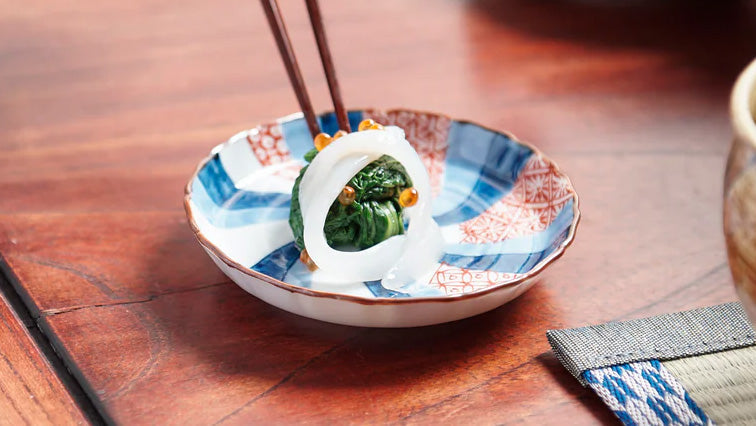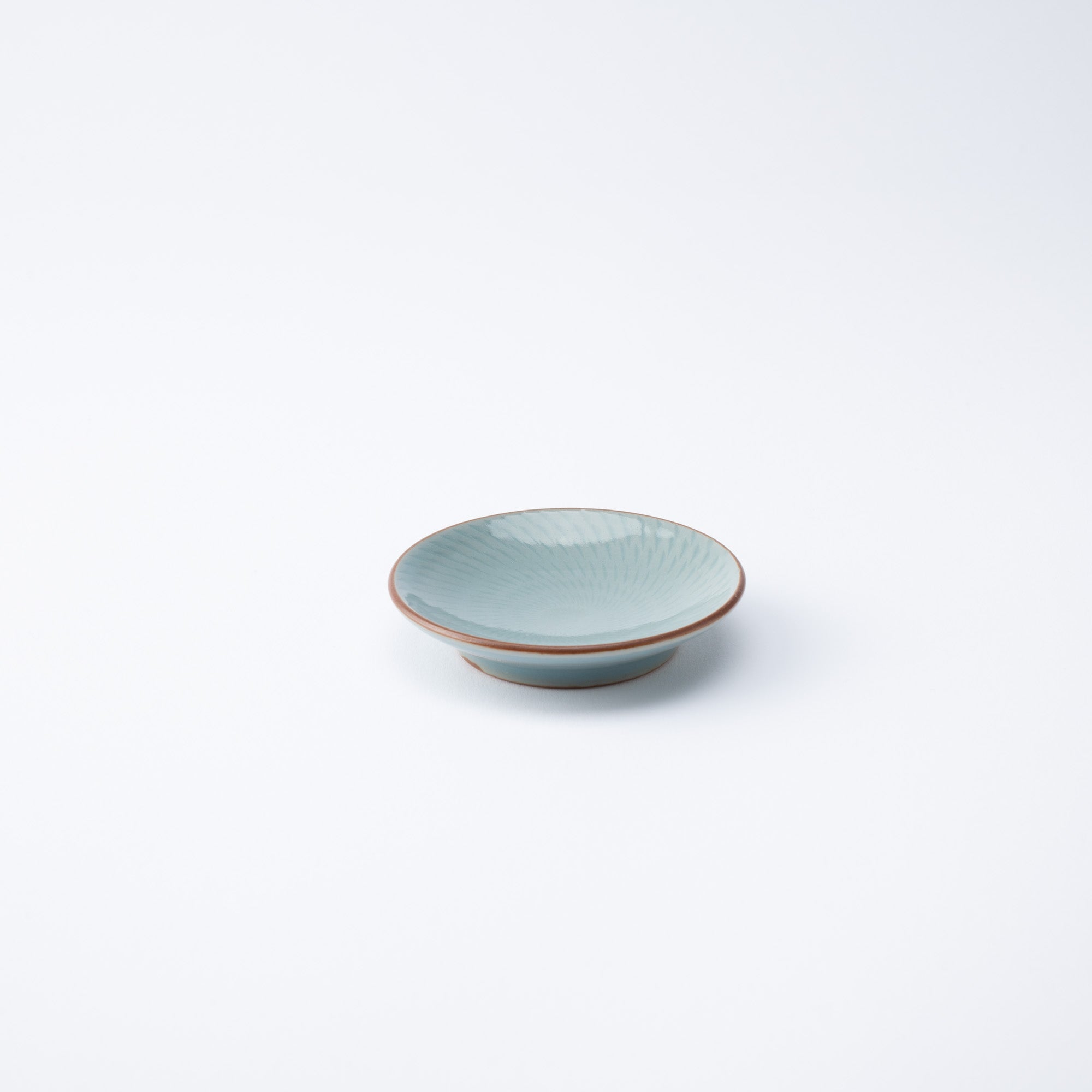

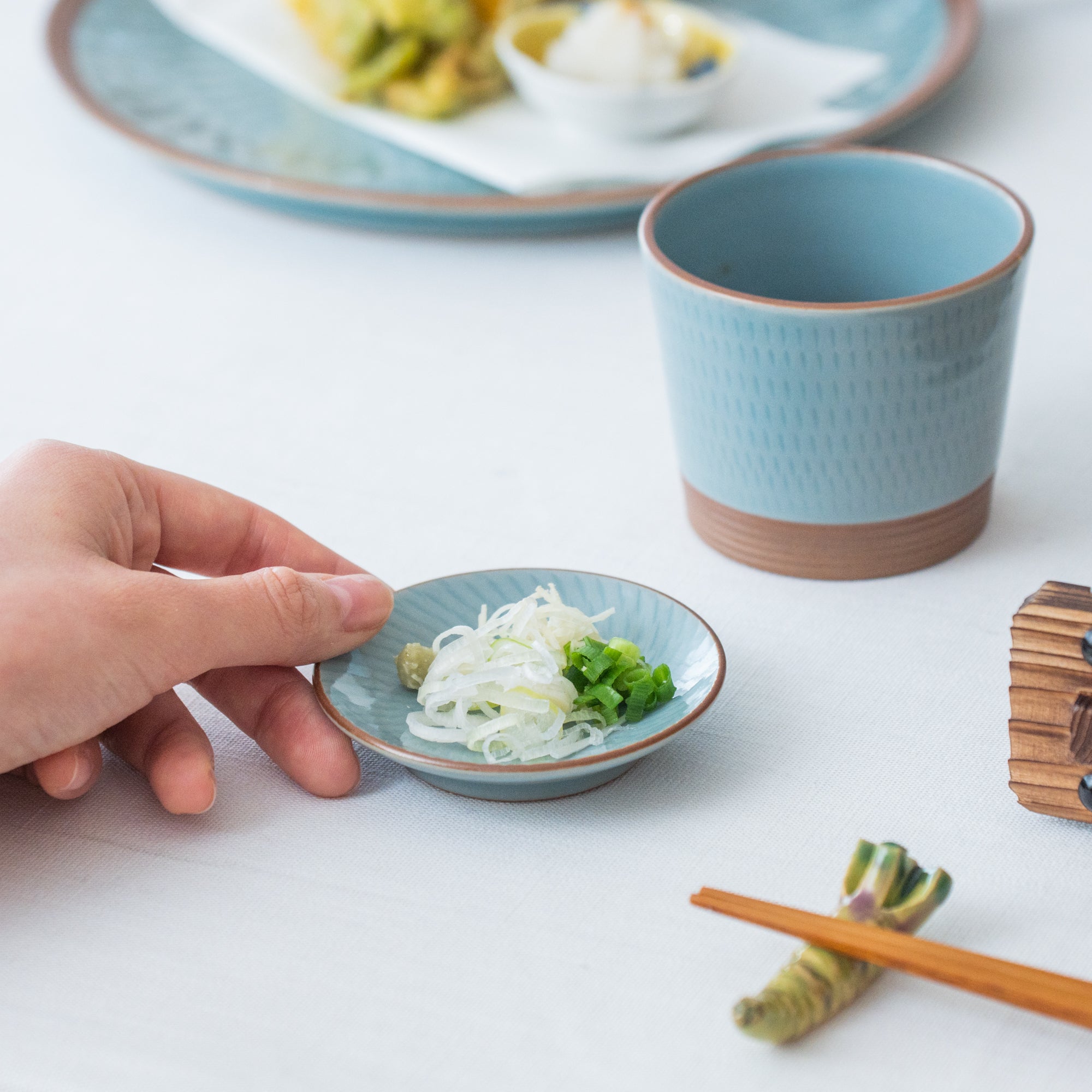




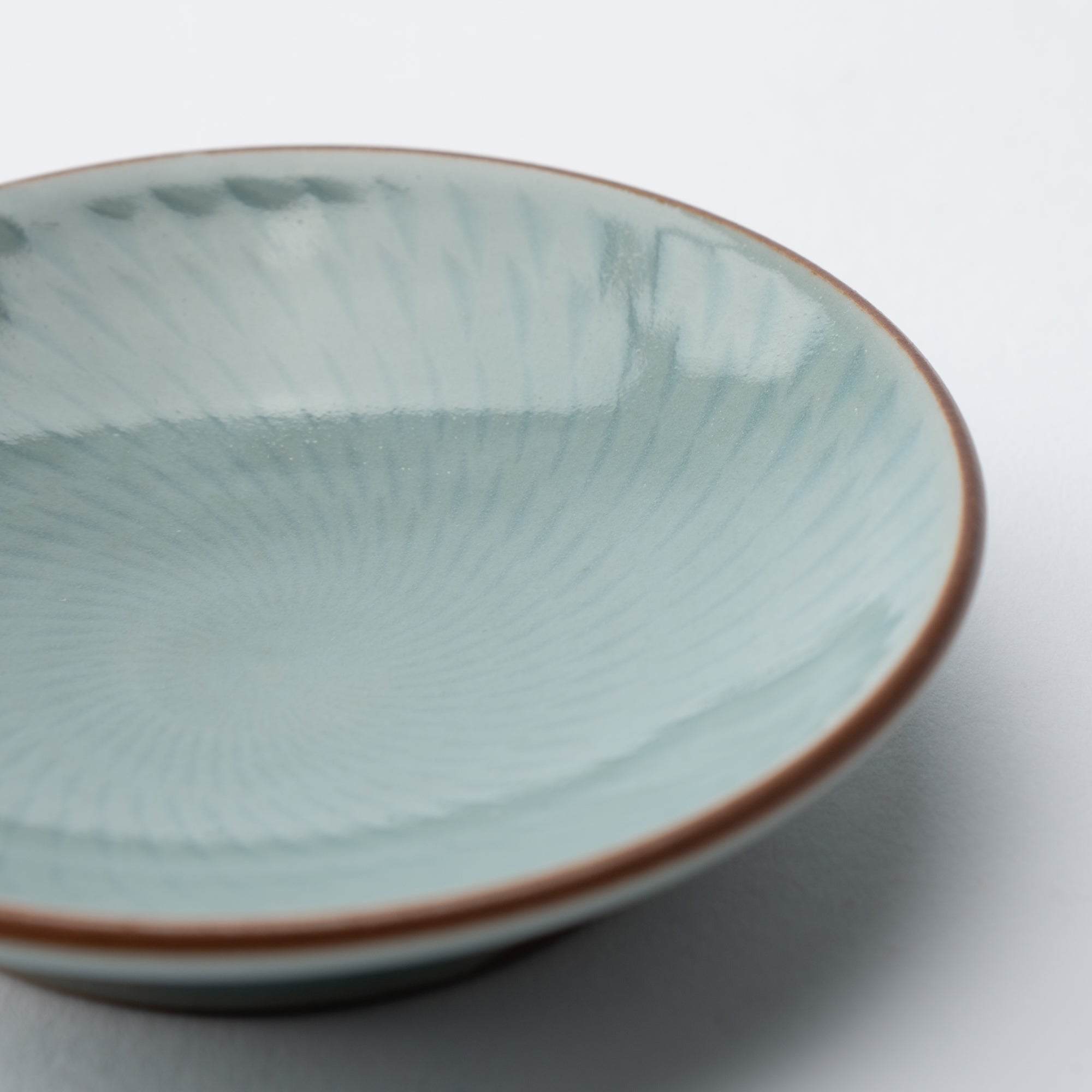

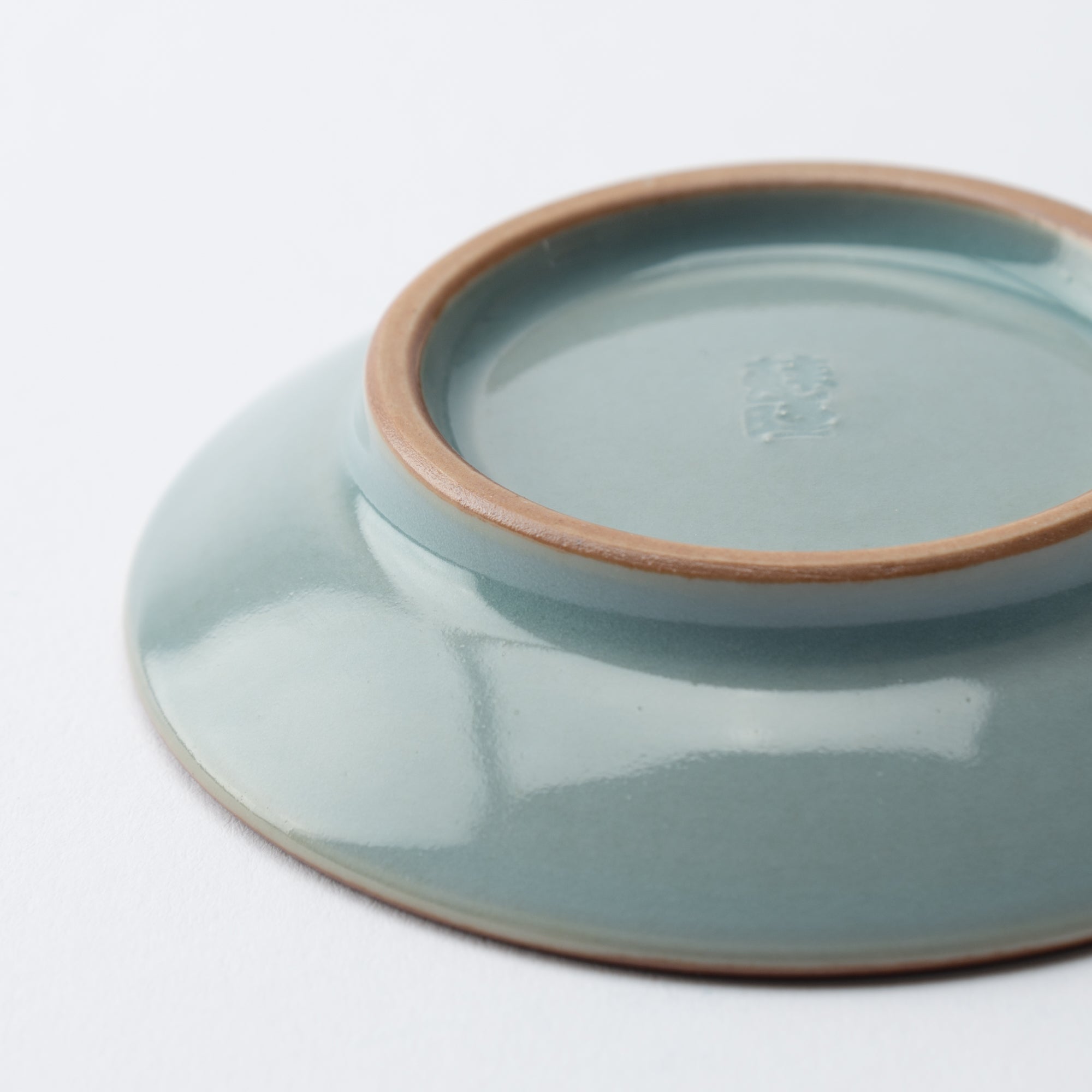
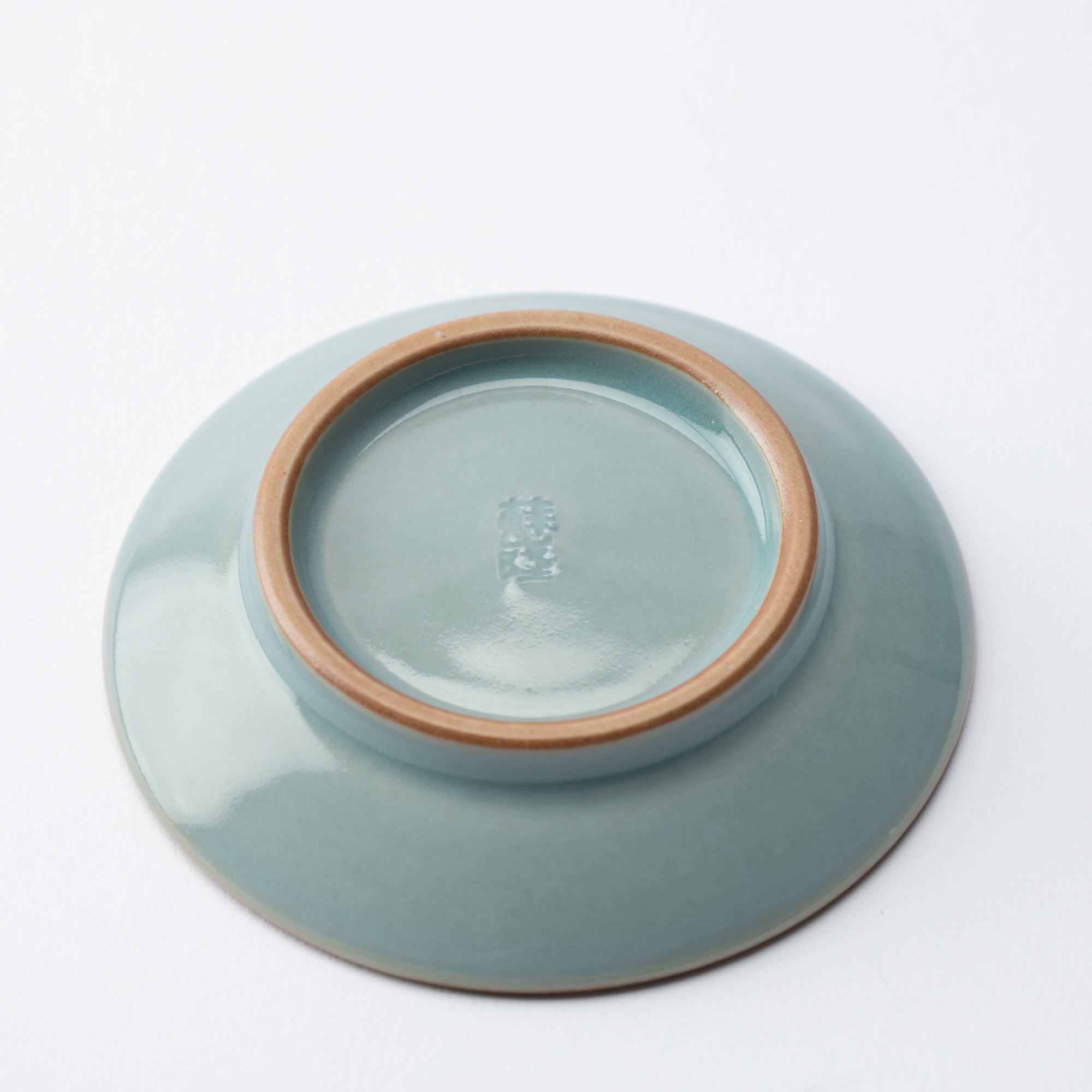




Türkis Farbiger Soßenteller
Estimated Shipping Widget will be displayed here!
Seladon wird oft für große Porzellanarbeiten verwendet, doch dieser charmante Soßenteller passt in Ihre Handfläche. Der Rand zeigt die Umrisse des roten Tons – eine exquisite Balance zwischen der Eleganz von smaragdgrünem Seladon und rustikalem Rot. Der Boden ist braun und unglasiert. Halten Sie ihn in der Hand und genießen Sie sowohl die glasierte, glatte Oberfläche als auch die rustikale braune Tonstruktur.
Der türkisfarbene Glanz entsteht durch das sorgfältige Einkneten der im Ofen selbst gemischten Pigmente und Seladonsamen in den Ton. Nach dem Brennen im Ofen erstrahlt der Seladonsamen in diesem einzigartigen, herzerwärmenden Blau.
Der Soßenteller ist der kleinste der Soryu-Ofen-Serie und vielleicht der kunstvollste. Die von Tobikanna eingearbeiteten Rillen sind sehr fein und bilden eine Spirale. Man kann den helleren Glanz des Seladon und die dunkleren Schattierungen der Rillen genießen. Dies kann für alle Ihre kleinen Vorspeisen oder einfach für Ihre Soße verwendet werden.
EINZELHEITEN
| Quantity | 1 |
| Size | D 8 cm (3.1 in) x H 1.2 cm (0.5 in) |
| Material | Porcelain |
| Package Type | Paper box |
| Microwave | Yes |
| Dishwasher | Yes |
Hersteller / Marke
Soryu Kiln ist ein Kyo-Keramikofen, der sich auf die Kunst der Seladon-Porzellanherstellung sowie die Techniken der Koishiwara-Keramik der Präfektur Fukuoka spezialisiert hat. Seine Werke zeichnen sich durch ein einzigartiges Design aus, bei dem die blauen Seladon-Töne durch Rillen hervorgehoben werden, die durch das Herausschneiden kontinuierlicher geometrischer Muster mit einer Technik namens Tobikanna, auch als Chattering bekannt. Ihr Stil ist eine Kombination aus der Noblesse traditioneller Seladonware und der volkstümlichen Handwerkskunst der Tobikanna-Techniken.
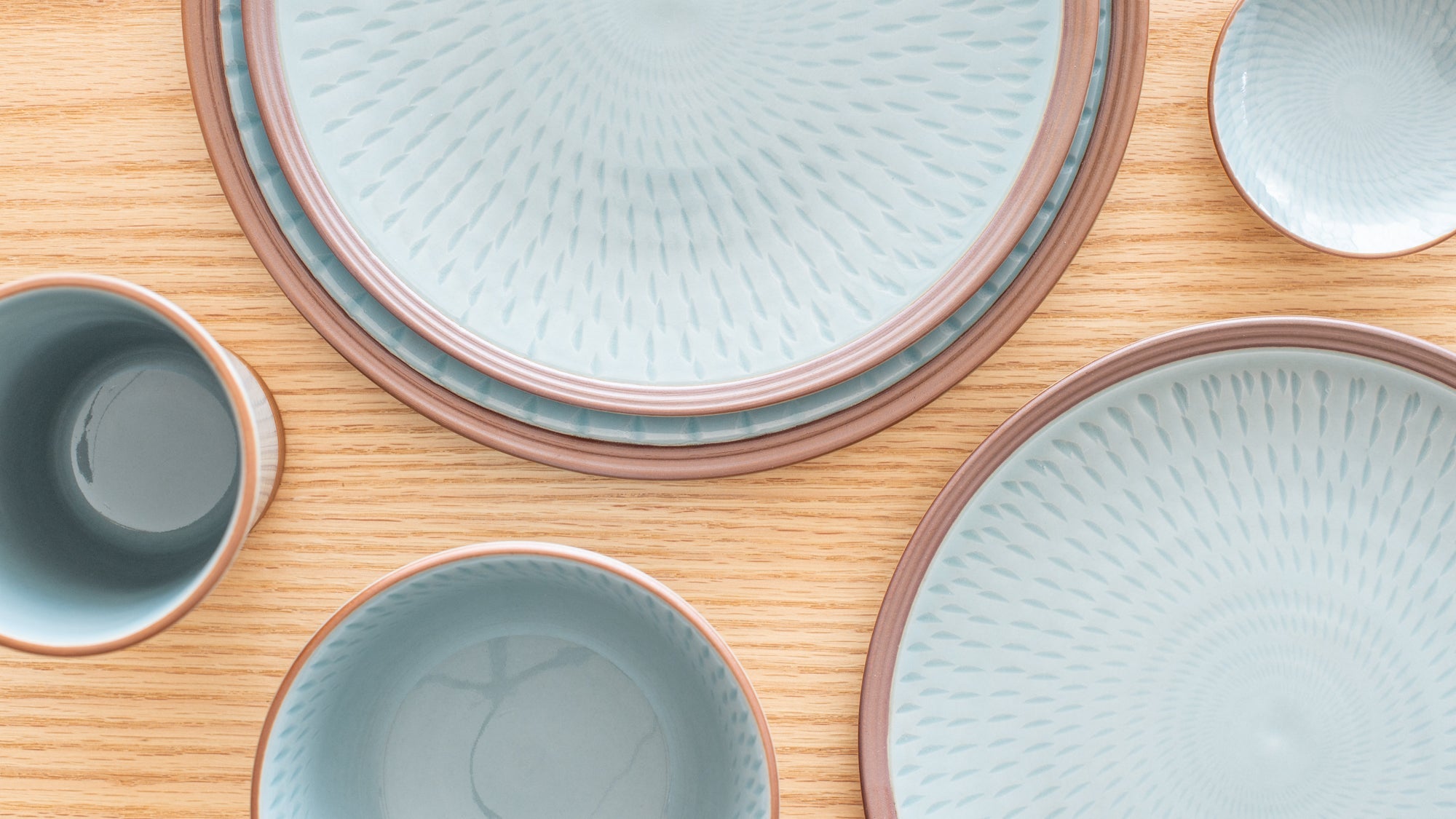
Kunsthandwerk
Kyo- und Kiyomizu-Ware, zusammen als Kyo-yaki und Kiyomizu-yaki bekannt, sind berühmte Keramikstile aus Kyoto. Bekannt für ihr lebendiges Design, ihre fein geformten Formen und die Liebe zum handwerklichen Detail, spiegeln diese Waren Kyotos unverwechselbaren Sinn für Schönheit und künstlerische Raffinesse wider.
Kyo- und Kiyomizu-Ware zeichnen sich durch eine lange gepflegte Vielfalt aus und greifen auf Techniken und Stile der Töpfertraditionen Japans zurück. So entwickelte sich eine ausdrucksstarke und typisch Kyoto-Kunstform. 1977 als traditionelles japanisches Kunsthandwerk anerkannt, werden sie bis heute wegen ihrer kulturellen Tiefe und Alltagstauglichkeit geschätzt.

Optionen auswählen















Soßenteller
Unsere Kollektion japanischer Saucenteller reicht von elegant bis kawaii und ist perfekt, wenn Sie etwas Kleines, aber Vielseitiges für Ihren Esstisch suchen. Die Schalen haben die passende Größe für Sojasauce und andere Beilagen zu Sushi oder Nudeln und eignen sich auch perfekt für mundgerechte Käse-, Nuss- und Vorspeisenhäppchen. Ein Must-have für jede Mahlzeit.
In diese Kategorie fallen Teller mit einem Durchmesser unter 12,9 cm (5,1 Zoll).

Porzellan
